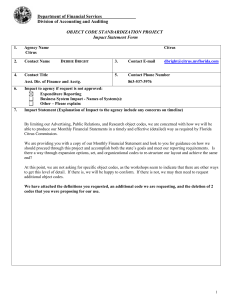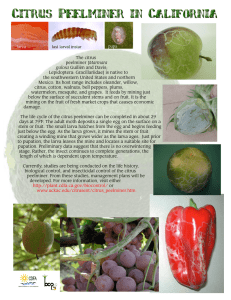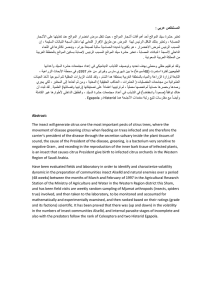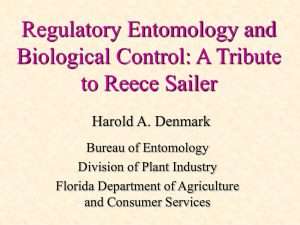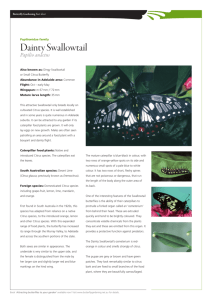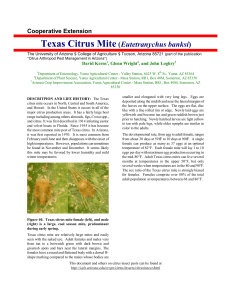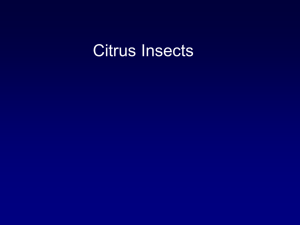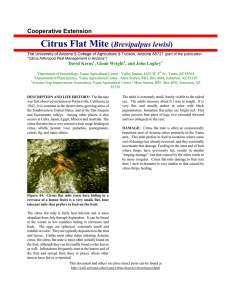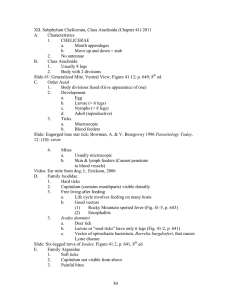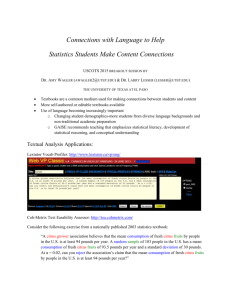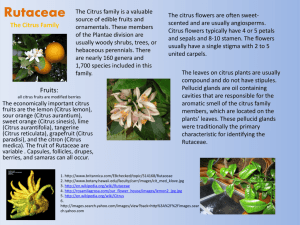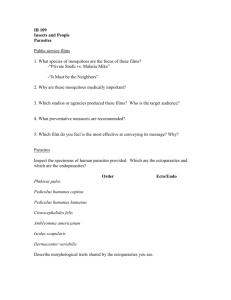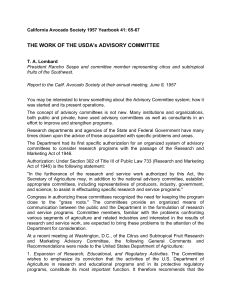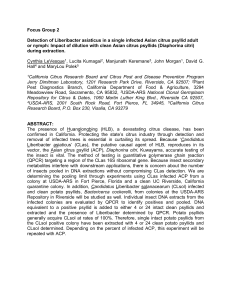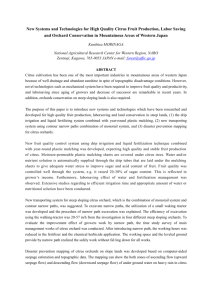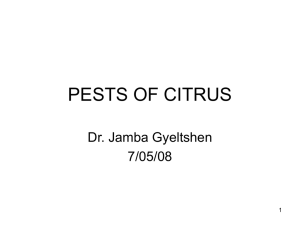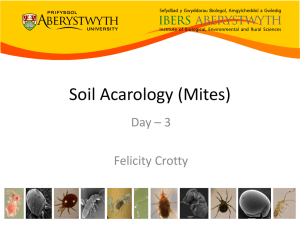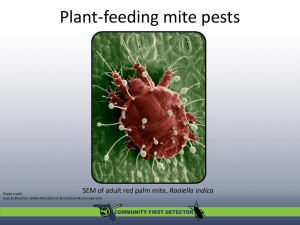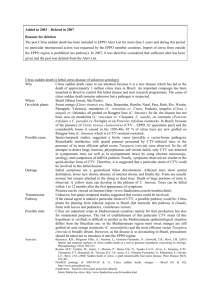Induction of plant defenses in response to Citrus
advertisement
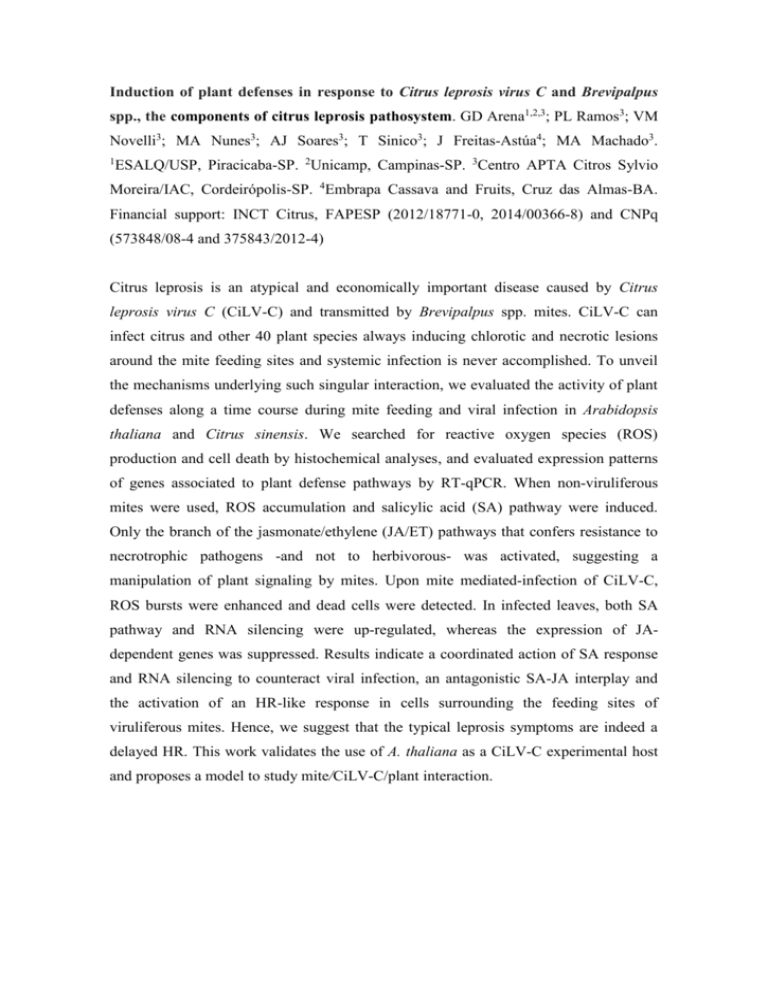
Induction of plant defenses in response to Citrus leprosis virus C and Brevipalpus spp., the components of citrus leprosis pathosystem. GD Arena1,2,3; PL Ramos3; VM Novelli3; MA Nunes3; AJ Soares3; T Sinico3; J Freitas-Astúa4; MA Machado3. 1 ESALQ/USP, Piracicaba-SP. 2Unicamp, Campinas-SP. 3Centro APTA Citros Sylvio Moreira/IAC, Cordeirópolis-SP. 4Embrapa Cassava and Fruits, Cruz das Almas-BA. Financial support: INCT Citrus, FAPESP (2012/18771-0, 2014/00366-8) and CNPq (573848/08-4 and 375843/2012-4) Citrus leprosis is an atypical and economically important disease caused by Citrus leprosis virus C (CiLV-C) and transmitted by Brevipalpus spp. mites. CiLV-C can infect citrus and other 40 plant species always inducing chlorotic and necrotic lesions around the mite feeding sites and systemic infection is never accomplished. To unveil the mechanisms underlying such singular interaction, we evaluated the activity of plant defenses along a time course during mite feeding and viral infection in Arabidopsis thaliana and Citrus sinensis. We searched for reactive oxygen species (ROS) production and cell death by histochemical analyses, and evaluated expression patterns of genes associated to plant defense pathways by RT-qPCR. When non-viruliferous mites were used, ROS accumulation and salicylic acid (SA) pathway were induced. Only the branch of the jasmonate/ethylene (JA/ET) pathways that confers resistance to necrotrophic pathogens -and not to herbivorous- was activated, suggesting a manipulation of plant signaling by mites. Upon mite mediated-infection of CiLV-C, ROS bursts were enhanced and dead cells were detected. In infected leaves, both SA pathway and RNA silencing were up-regulated, whereas the expression of JAdependent genes was suppressed. Results indicate a coordinated action of SA response and RNA silencing to counteract viral infection, an antagonistic SA-JA interplay and the activation of an HR-like response in cells surrounding the feeding sites of viruliferous mites. Hence, we suggest that the typical leprosis symptoms are indeed a delayed HR. This work validates the use of A. thaliana as a CiLV-C experimental host and proposes a model to study mite/CiLV-C/plant interaction.
